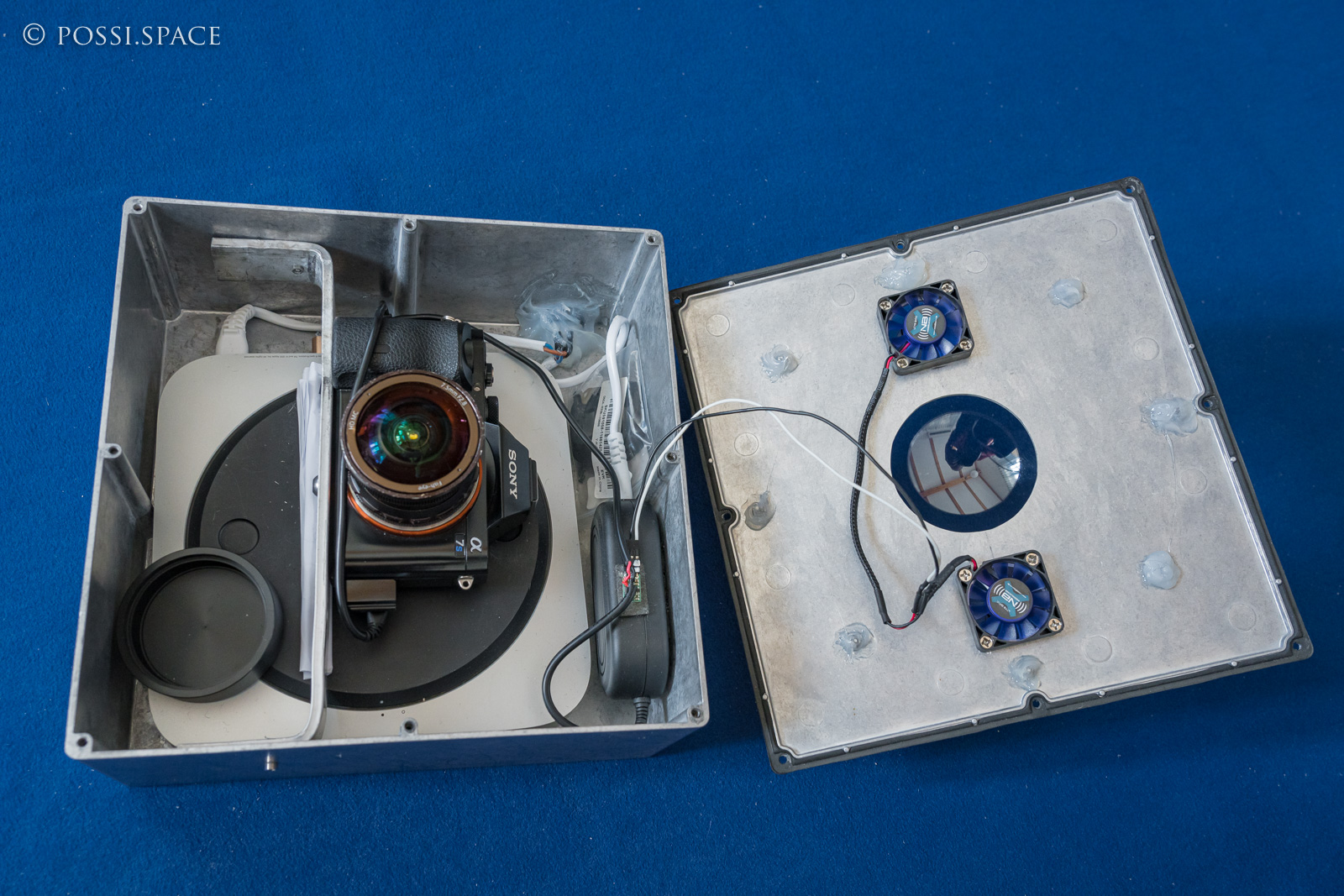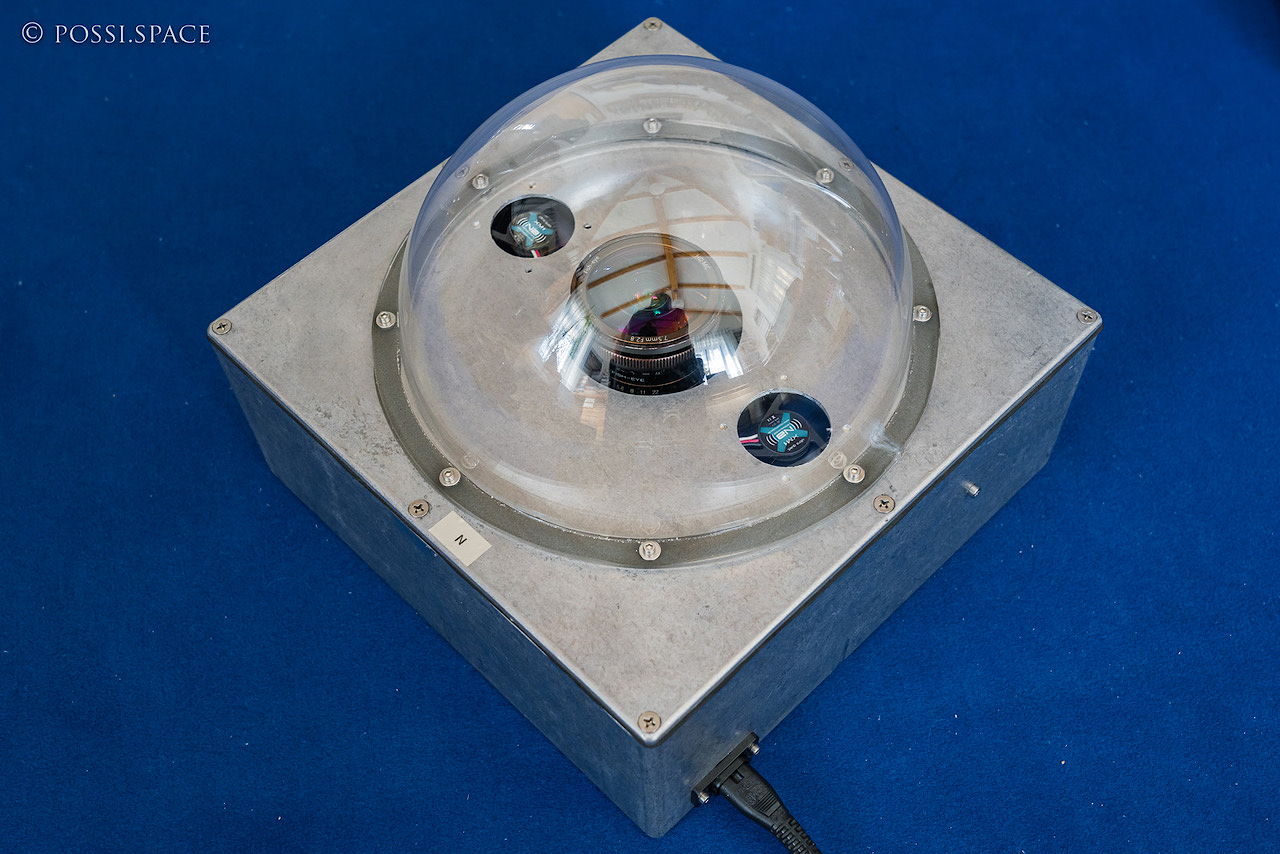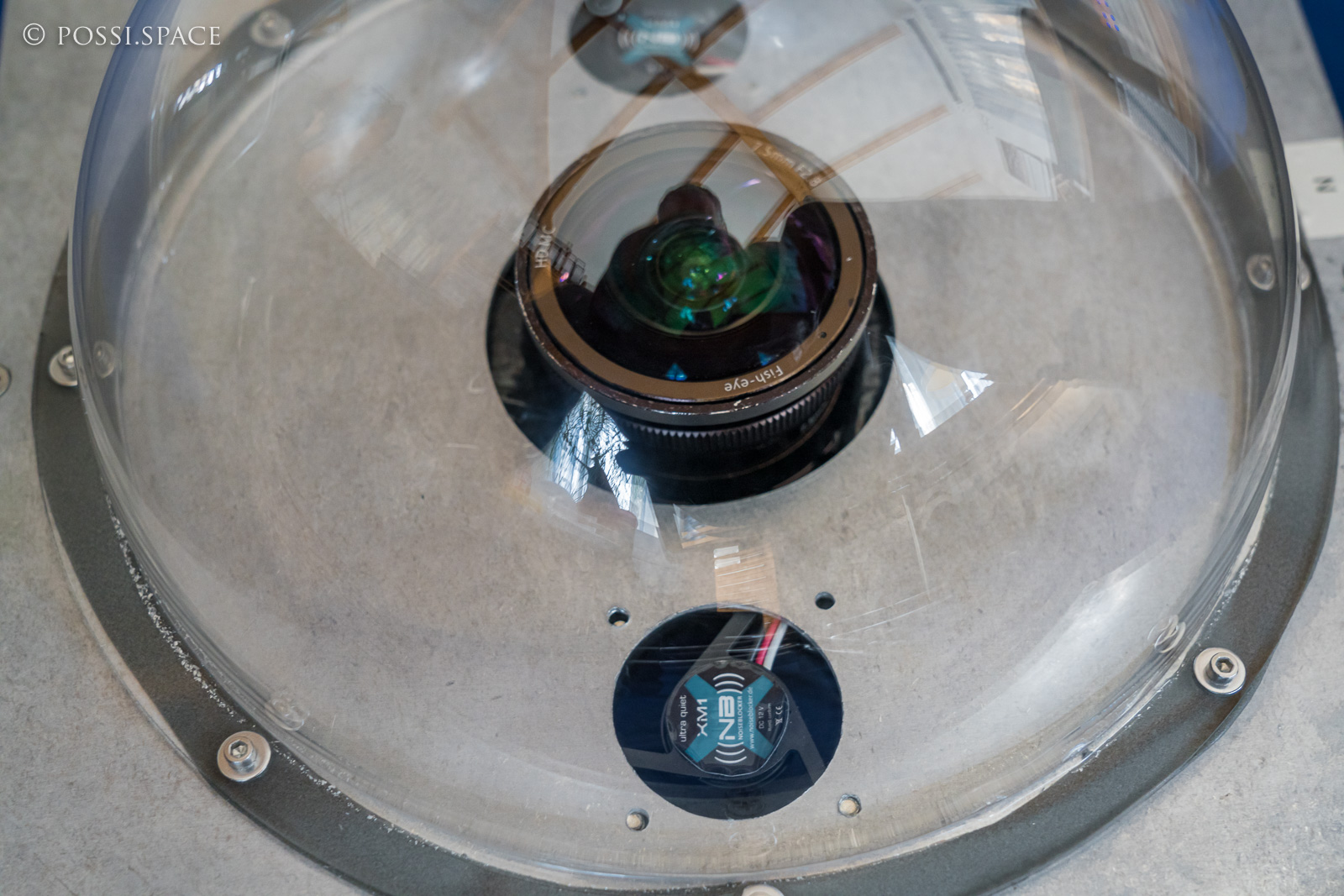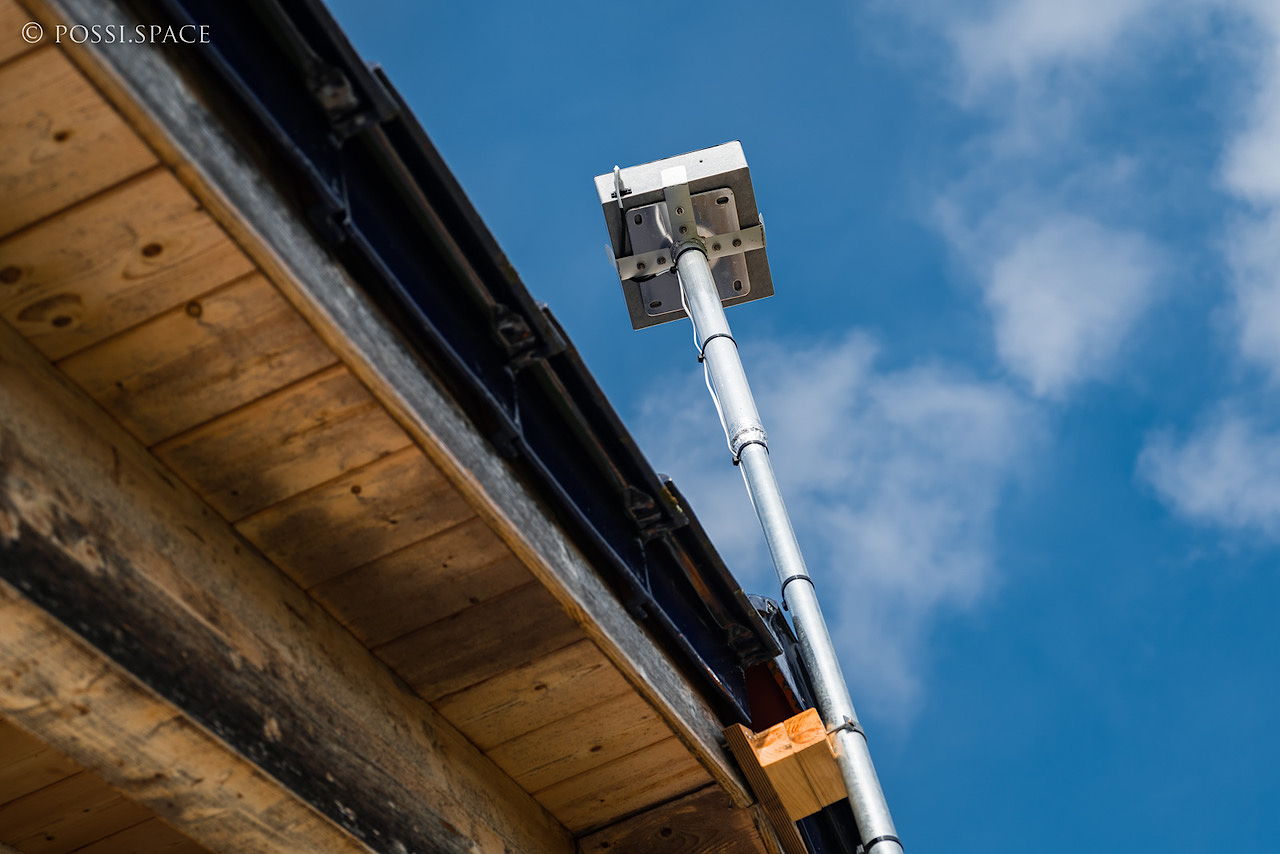I put together this high-quality Allsky camera from components that were just lying around and were several years old. The heart is a 2013 Apple MacMini and a 2014 Sony A7S full frame camera. The camera is permanently supplied with 7.6 volts from a China power adapter with dummy battery. Mounted was a cheap (just over 100€) fully manual Pergear 7.5mm fisheye lens from China, which is actually offered for APS-C cameras. I simply cut off the sunshade, then it became an approximately round imaging fisheye, top and bottom with minor edge trimming. On the high-sensitivity 12 megapixel full-frame camera, the sharpness is quite good and more than adequate for the purpose. In the camera itself I mounted a clip-in filter, which reduces light pollution (Optolong L-PRO). To make the colors look approximately correct again after the strong filter, I set 3000° color temperature and a custom color correction of A2 and G7 at 2800° Kelvin. During the day it looks a bit too blue, but on clear nights it is reasonably correct. I leave the exposure to full auto at f2.8, which works very well, even the Milky Way is very visible on clear nights. My default is ISO auto up to 3200, up to 30s variable auto exposure and fixed open aperture f2.8. The A7S and its successors are still the most light sensitive full frame color camera on the market today with only 12 megapixels and large area pixels. The camera is controlled from a Mac using Sony's free Remote software, with adjustable interval timers. It shoots in electronic "silent mode" (i.e., no wear on the mechanical shutter) and updates every minute. This guarantees unsmudged stars at up to 30s exposure time and the ultra-short focal length of 7.5mm. The image is then uploaded to my Allsky web server by a short perlscript. Important for me was a reasonable image quality. This is simply not achievable with cheap, low-resolution guiding cameras and simple mini-lenses, and besides, only in black and white. The housing is a durable, waterproof aluminum Hammond 1550WN from Conrad. I cut a hole in the lid, which was covered with a 20cm plexiglass dome. A dome as large as possible shows much less blurring due to material irregularities and also allows small raindrops to be seen immediately. Surprisingly, the WiFi signal is scattered to the side by the lens hole and the metal lens and is unexpectedly strong, so I could save the hard wiring by WLAN cable. The 12-megapixel images, which are about 2Mbytes in size, are uploaded to the server in just 1-2 seconds. If I want to change camera parameters, I go to the computer with the remote control software "Splashtop" and set them accordingly on the Sony software. Of course, this also works with the tablet I usually use to control my telescope (via ASIAIR). In the power line I put a WiFi switch, so that I can start the computer "hard" in an emergency. I configured the necessary software (Sony-Remote, Uploadscript and remote control) to boot automatically after a power interruption. The camera has become indispensable for any kind of nighttime astrophotography. In particular, even the thinnest clouds are immediately visible, approaching thunderstorms anyway. And of course satellites, meteors, missiles, etc. All images remain stored until I delete them remotely.
 This is what the camera looks like with the case open. The MacMini below, the camera above.
This is what the camera looks like with the case open. The MacMini below, the camera above.
 The camera closed. Except for the mains power, no cable is needed. Communication goes via WiFi.
The camera closed. Except for the mains power, no cable is needed. Communication goes via WiFi.
 The "shaved" fisheye and next to it two small fans for the computer waste heat, no fogging even in the cold.
The "shaved" fisheye and next to it two small fans for the computer waste heat, no fogging even in the cold.
 An inverted satellite mirror mount serves as the mounting point above the roof, and the camera has been precisely aligned.
An inverted satellite mirror mount serves as the mounting point above the roof, and the camera has been precisely aligned.
 A beautiful sunset as it appears on the web (resolution greatly reduced here, screenshot from tablet). The non-circular shape of the image comes from the hilly surroundings.
A beautiful sunset as it appears on the web (resolution greatly reduced here, screenshot from tablet). The non-circular shape of the image comes from the hilly surroundings.
 And here's another very mediocre June night (bortle 4 after midnight), with a lot of dirt in the air. Here you can easily decide in advance whether a recording session is worthwhile.
And here's another very mediocre June night (bortle 4 after midnight), with a lot of dirt in the air. Here you can easily decide in advance whether a recording session is worthwhile.
The original full resolution can be downloaded here.